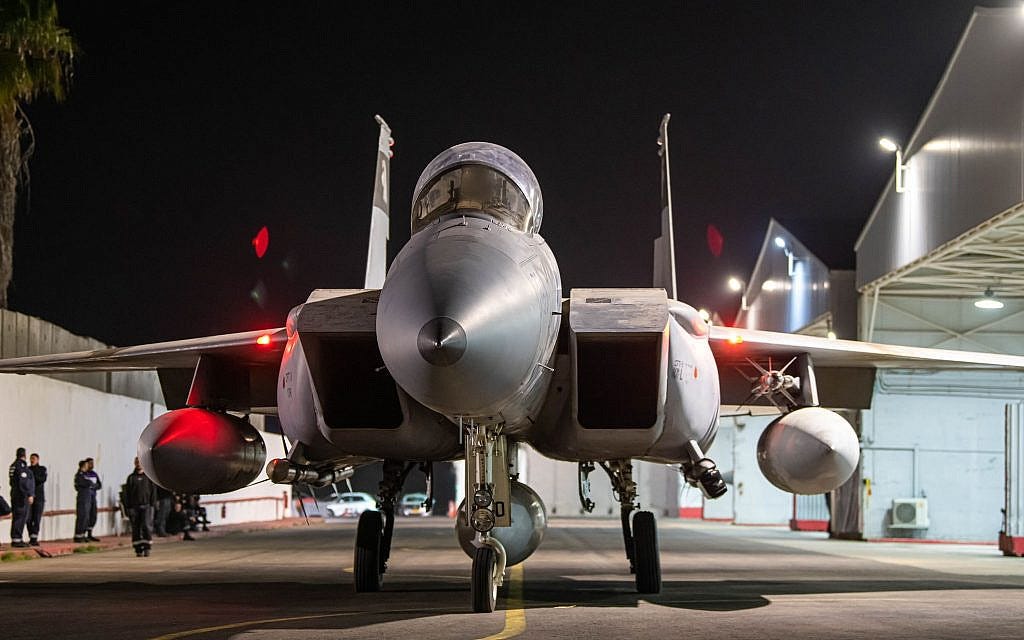
The Attack
Near 2:00 AM on October 26, 2024, after giving notice to the United States, Israel initiated operation Days of Repentance, Israel’s response to Iran’s 181-ballistic-missile attack October 1st, 2024, on the Jewish State. In a complicated, well-choreographed operation, sixty Israeli fighter jets took off from multiple airbases within Israel, four of them crewed by women in the navigator’s seat. Early-warning aircraft joined them along with an aging fleet of mid-air refueling planes. All planned to reach specified waypoints at appointed times. Major S. said of the IDF’s preparation for the attack, “As the launch moment approached, we trained even more closely on execution details and mission models, so there was very little difference between our readiness that night and our standard preparedness,” and that “I am driven by a sense of national duty” that left him feeling the weight of his personal responsibility.
An air traffic controller charged with the responsibility of managing multiple takeoffs and landings at one of the airfields felt the gravity of the moment too, saying she felt the experience “powerful” and historic requiring her to remain focused on “launching the remaining aircraft, anticipating their return, and keeping the field fully operational under heightened threat conditions.” In total, about 100 planes and 150 aircrew flew in three waves through Syrian then Iraqi, and in some cases then Iranian airspace before firing their missiles. Israeli planes did not enter Saudi Arabian or Jordanian airspace. And at some point, radar screens in Iran froze according to a KAN radio report, perhaps due to an Israeli cyber-attack, thus probably alerting the Iranians that an attack was coming but not from where. Meanwhile, American planes loitered in the dark skies—perhaps to defend American bases in the region from an Iranian response, to create an extra layer of defense should Israel need it, and according to one report, to provide assistance should an Israeli plane have been downed.
Little more than four hours later when dawn broke, smoke rose from twenty different locations in Iran, many widely separated, and Iran’s aerial defenses lay in ruins. All of Israel’s planes returned home safely. No crewman was injured.
What follows is my best effort to reconstruct what happened from a myriad of public sources and private podcasts, sometimes conflicting. Following that, I provide my view of what it all means and what may still be to come.
After Iran Attacked on October 1
No serious observer of Middle East affairs doubted that Israel would respond in a significant manner to Iran’s second missile attack on Israel. Israeli Defense Minister Gallant made clear that Israel’s response would be so visible to Iran’s citizens that the Iranian regime could not deny it. But the question lingering in the minds of even Israel’s most ardent supporters was what would be targeted (for a detailed discussion of that see my Newsletter #61, dated October 9, 2024). Some saw Israel’s right to retaliate as an opportunity to go after Iran’s nuclear program and energy resources. Others hoped for something that would have less potential to trigger an all-out Middle East war.
The Biden administration worked hard to convince the Israelis to avoid Iran’s nuclear and energy sites. In return, the United States sent Israel a Thad ballistic missile interceptor battery along with 100 U.S. personnel to operate it. By doing so, the United States literally put skin in the game by placing American personnel in harms way as a warning to Iran and a demonstration of seriousness to Israel. The Thad system was quickly integrated, as had been previously practiced, into Israel’s already very effective Arrow ballistic missile defense system. This provided Israel with an extra measure of defense and a confidence booster. In addition, although perhaps not by overt agreement, was the tacit understanding that if Israel would limit its retaliation to a level the U.S. would accept, America would provide diplomatic cover and by some reports, give Israel the benefit of intelligence gathered by the United States. Nevertheless, at least one high-level commentator took pains to opine that Israel in the end did what it felt it needed to do, and that while it considered American views, Israel treated those views as advice, not orders. Ascertaining the truth of that I’ll leave to future historians.
With this retaliation, Israel had four goals:
Knock-out Iranian ballistic production capabilities for a year or more.
Send a second message that Iran’s nuclear program and energy assets are exposed.
Ensure that the Iranian regime could not hide the seriousness of Israel’s response from the Iranian people.
Make it easier for Israel to launch future aerial offensive operations in Iran should Iran respond by attacking Israel or by further enriching its uranium to weapon grade.
Utilizing three waves of strikes, Israel succeeded in accomplishing all four of its goals.
The First Wave
Iran is far from Israel—with targets ranging from 1,000 to 1,250 miles away. Likely due to political concerns, Israel chose a route through Syria and then Iraq before entering Iranian airspace or loitering outside of it to fire missiles carried onboard. This required eliminating all air defenses that could intercept the fighter jets, refueling planes, and command and control early warning planes flying through. Very possibly, also present, were helicopters capable of performing rescue missions for any pilots shot down.
The Second Wave
Years ago, Iran purchased four S-300 anti-aircraft missile systems from Russia. They came complete with radars that could detect incoming missiles and planes from hundreds of miles away. The concept was simple—first the radar finds incoming planes and then the ground-air missiles shoot them, and any missiles the planes have fired, down. Not satisfied with just the four S-300s, the Iranians reverse engineered the systems and built more of their own. Even though the homegrown versions were not as capable as the S-300, combined with the Russian systems they added to the threat Israeli aircraft faced. Enough of a threat that Israel’s air force practiced extensively to develop tactics to destroy them without incurring any losses. Reportedly, some training was done in Greece, who had also purchased the S-300 from Russia, and some in the United States who had perhaps purloined them or obtained them voluntarily from eastern European allies after Russia attacked Ukraine.
Iran positioned its air defenses to defend its critical nuclear, energy and other sites. In April 2024, to send a message while demonstrating restraint days after Iran’s April 13, 2024 missile and drone attack on Israel, Israeli forces destroyed an Iranian S-300 battery complex that defended some of Iran’s nuclear sites. When Iran turned a deaf ear to that message by again attacking Israel with a missile attack on October 26, Israel was determined, with the support of the United States, to now teach Iran a hard lesson. This time, Israel destroyed all three remaining S-300 air defense sites and radars as well as some of Iran’s copycat surface-to-air missile defense sites and likely at least one independent radar system too. As a result, Iran was now blind and helpless to detect any further air attacks and defend against them. Thus, with the lawn now mowed, and the danger mitigated, came the third wave.
Third Wave
Determining what happened in the third wave is still a bit cloudy since reporting is contradictory as to events during each wave. Nevertheless, cumulatively between the 2nd and 3rd third waves at multiple locations, the IDF destroyed much if not all of Iran’s missile solid fuel production capability. This was important because advanced rockets use solid fuel rather than liquid fuel. Also, any rockets relying on liquid fuel must go through a highly visible and elongated fueling process immediately before firing that Israeli and American intelligence services would not miss. Solid fueled rockets can be launched with little preparation that limits the ability of intelligence techniques to provide early warning of their intended use.
Targeted especially were solid-fuel mixers that Iran purchased from China over the years and at significant expense. Replacing them will take time. In addition, Israeli munitions destroyed other factories necessary for producing ballistic missiles, including their precision guided components. Furthermore, while reporting focuses mainly on the destruction of Iranian missile production, it appears that at least one UAV production site was also destroyed and an oil storage site. And some mystery remains due to suggestions made by high-level sources that the IDF struck other unannounced sites too. Perhaps the reason for not disclosing them is either to hide the method of their destruction or else to not further embarrass the Iranian regime in hopes of it not responding by firing more missiles at Israel. Stored, already built, ballistic missiles were not targeted because Iran keeps them in hard-to-reach underground locations.
Also of particular interest was Israel’s destruction of a building called Taleghan 2 at the Parchin military complex. The Parchin military complex contained facilities for solid fuel production but it is also infamous for its involvement in Iran’s nuclear program. Without going too far into the weeds, the Taleghan 1 building once contained items of interest in Iran’s nuclear program and there is strong belief that the Taleghan 2 building that is partially encased by a hillside did or does now too. Therefore, whether it once or still did have contraband nuclear equipment, at a minimum destroying it was a message to Iran’s leaders of their incapacity to defend Iran’s most important locations and of Israel’s capability to destroy them.
Also, some believe that during the third wave Israel destroyed some or all of the air defenses allocated to Iran’s energy sites—including production and shipping. That would leave Iran naked to a future attack on its economy.
And finally, because Israel destroyed pertinent air defense assets in Syria, Iraq and Iran, it will not be difficult for Israeli warplanes, or American ones should that become American policy, to return—this time, striking nuclear and energy sites without warning. If I were an Iranian, I would see this as a perilous time.
Analysis
Frankly, it simply amazes me where things sit today. Despite constant pressure from the United States and much of the rest of the world, Israel’s enemies are diminished, and Israel is standing at the precipice of a strategic victory over Iran’s largest proxies. As a result, Iran’s Ring of Fire strategy has been shattered because Hezbollah is reeling and Hamas is a shadow of its former self—still capable of cowing many Gazans and wielding terror as policy, but for the moment not an existential threat. Israel has also achieved a huge tactical victory with the promise of more should Iran further its nuclear program or continue to attack Israel. Furthermore, the Gulf states have seen what Israel can and is willing to do rather than what it can’t and won’t do. This bodes well for future normalization with Saudi Arabia. Yet, the danger is not over, the hostages have not come home, and the war is not yet won.
Now, three salient issues are front and center:
Will Iran respond to Israel’s controlled but devastating strike?
Will there soon be a ceasefire in Lebanon or Gaza?
What is required for an Israeli strategic victory over Iran?
And for #1 and #2 above, are the upcoming U.S. elections a factor?
Will Iran respond and What Would Israel Then Do?
Iran still maintains an inventory of 2,000-3,000 ballistic missiles. In addition, its proxies in Iraq and Yemen have their own inventories as does Hezbollah, although recent reports suggest that 80% of Hezbollah’s overall missile inventory and 70% of its drones have been destroyed leaving a still potent but much reduced force. Therefore, the capability for Iran to create or order havoc still remains. So too could Iran decide to further enrich its stock of nuclear material. That would take only one to two weeks to go from 60% enriched uranium to a weapons-grade 90% in quantities sufficient to create up to fifteen nuclear bombs. Even though Iran would still lack the means to deliver them by missile, possession of nuclear bombs would open other opportunities for mischief and change power equations and nation-state behavior in the Middle East and worldwide in somewhat predictable but still uncertain ways. It also would invite a devastating attack by Israel and open the door to an American strike since stated U.S. policy is to never permit Iran to obtain nuclear weapons.
During the first twelve hours after Israel struck, Iran maintained that the damage it incurred was minimal and confined its retaliatory rhetoric to more general statements like that of Iranian President Masoud Pezeshkian who said ambiguously the day after Israel’s strike, “We will respond appropriately to the Israeli attack on our land.” This caused many to be hopeful that Iran would not respond in a major way.
However, Iran’s rhetoric has since darkened.
Now, we are seeing comments like that of an Iranian Foreign Ministry spokesperson who said Iran will "use all available tools" to respond to Israel's attack. Also the statement of a high-ranking Iranian military official who warned Israel will face “bitter and unimaginable consequences.” And most threatening of all, on November 2, 2024, Ayatollah Khamenei threatened Israel and the US with “a crushing response.” When Khamenei talks he often means it. Furthermore, On October 31 there were reports that Iran will respond with a huge attack emanating from its proxy in Iraq that incorporates both missiles and drones. Why from Iraq rather than Iran? Likely in hopes that Israel will not strike back inside Iran since missiles and drones previously launched from Iraq did not provoke the Israelis to do so. And also because Iranian missiles and drones will not have to travel as far if launched from Iraq as opposed to Iran, thus giving the IDF less warning and opportunity to shoot them down.
As for timing, some reporting suggests that an Iranian revenge attack could come before the U.S. election although other reports suggest that Iran does not want to do anything until after the election out of a desire not to enhance its perceived likelihood that would cause a Trump victory and/or so as not to be viewed as trying to influence the election. Within Israel, Israelis are bracing for an Iranian response and so seems to be the case for the United States who has warned the Iranians that it will not be able (have reason?) to hold back the Israelis from then delivering a much more devastating attack than what they did on October 26.
However, inside Iran, there are increasing reports that the attitude of the Iranian people does not match the bellicose statements of their government. Perhaps this was part of Israel’s strategy and derivative of American advice in that only four Iranian soldiers died but no civilians did on October 26. Some graffiti seen in Iran reflects the opposition mood in Iran, “Israel you start this, and we will finish it.”
Meanwhile, as we wait out Iran’s next moves, I am certain the IDF has prepared responses should Iran test Israel’s restraint. And I suspect, an Israeli response would be more immediate than the last one for three reasons. The first is preparedness. Even though the Israeli air force trained and planned for an aerial attack on Iran for years, and even though it achieved proof of concept with its long-range airstrike against the Houthis on September 29, 2024, nothing is more instructive than actually doing it. Coordinating takeoffs, performing multiple refueling missions with aging tankers in a hostile environment, and achieving pinpoint success is no easy thing in the fog of war. Having now done it, the next time will be easier. Especially because of the all-important second thing—the IDF has mowed the lawn—meaning next time its focus will not be distracted and its offensive capabilities not dissipated by air defense systems in Syria, Iraq, or Iran because they have all been destroyed. And then there is the third thing. Every day that passes, the IDF is destroying more of Hezbollah’s missile and drone strength. Thus, less capability remains for Iran to saturate Israel’s defensive systems by attacks by both itself and its proxies and therefore there is less need for Israel to hold back its warplanes to deal with Hezbollah.
Still, the issue remains, should Iran attack Israel in the next few days, what would Israel then target in Iran and when? First, I suspect that Israel would not do anything until after the U.S. election. Not so much in fear of who is elected but out of concern for impacting the election. Second, unless Iran begins to further enrich its uranium (something that probably Israel and/or the U.S. would detect but of which there is no guarantee), Israel might still limit its response to energy sites rather than nuclear ones unless Israel possesses undisclosed cyber weapons, local saboteurs that could go after the nuclear sites, or knowledge of choke points that its 2,000 pound bombs and other ordnance could effectively reach (the U.S. has 30,000 pound bunker busters that could much better do the job) Third, it would not surprise me if Israel took advantage of Iran’s open skies to go after Iran’s civilian leadership. However, of this I am certain—Israel has no wish to play “ping pong.” Therefore, should Iran respond to Israel’s recent strike in a meaningful way, I am relatively certain that Israel’s response will be devastating in hopes of putting an end to the back and forth. And something more—in recent days the United States has positioned several of its B-52 bombers to the Middle East that can carry the 30,000-pound bunker busters. Post election, if Iran seeks a nuclear breakout, we could see the U.S. use the B-52s to great effect. I’m not predicting—just saying!
Ceasefire Talks
Regarding the hostages, there is no deal in sight despite attempts over the last several days by Israeli, American, Qatari, and Egyptian leaders to find common ground with whomever now makes the decisions for Hamas. The discussions focused on a less for less type starting point strategy, with Egypt first suggesting that in return for the release of four hostages, that Israel would agree to a two-day ceasefire during which more humanitarian aid would enter Gaza and also Israel would release some Palestinian prisoners. That idea morphed into the release of more hostages in return for a thirty-day ceasefire. Hamas responded with a clear and resounding “no” to anything other than an end of the war and IDF withdrawal from Gaza. And so, Gazan citizens will continue to suffer, and Israelis will remain held in inhumane conditions—all because Hamas has no regard for the Gazan people while it continues to insist on achieving a win for its diminished terrorist organization.
As for Hezbollah, despite optimistic reporting based on unconfirmed leaks, American negotiators are facing intransigence like what they experience with Hamas. Israel’s conditions for a ceasefire are simple, Hezbollah must no longer be able to threaten Israelis in the north. Why? Discovery of a mile long attack tunnel capable of housing 1,000 terrorists in a town adjacent to Kibbutz Misgav Am, the thousands of missile launchers and tens of thousands of rockets pre-positioned in Southern Lebanon, and the pre-October 7 presence of the thousands of Radwan unit members on the border that trained to do what Hamas did—are merely some examples of the danger Israelis living along or near the border faced before October 7 and must never again. They were dangers that should not have been there because it was precisely what U.N. Resolution 1701 was supposed to prevent by empowering UNIFIL and the Lebanese Armed Forces to make sure that there were no other armed forces south of the Litani River. But that did not happen—Hezbollah openly built a huge and capable offensive force up literally under the noses of those that were supposed to prevent it but that refused to do so. Now, Israel is insisting on an enforcement mechanism to ensure that Hezbollah will comply with and abide by an agreement that requires it to withdraw to north of the Litani River. Likely, absent some provision that contains teeth not just verbiage, that enforcement mechanism would have to include the right of the IDF to intervene should Hezbollah again violate the terms of any international deal. Since, Hezbollah and the international community is unlikely to agree to that in the short term, I’m not optimistic that there will soon be a deal in the north. Nor is that necessarily a bad thing since with every passing day, the IDF continues to degrade Hezbollah’s strategic capability to attack Israel and Hezbollah’s political hold over Lebanon loosens.
What is Required for Israel to Achieve a Strategic Victory Over Iran?
It is true that Israel has effectively shorn much of the strength of Iran’s proxies. And Iran now is defenseless to further air attacks by the IDF. But these are circumstances that Iran can reverse over time. And Israel has not yet rendered Iran a toothless tiger because it is still capable of causing much harm with its remaining stocks of ballistic missiles, cruise missiles and drones. All augmented by weapons possessed by Iran’s Iraqi, Houthi, Syrian, and weakened Hezbollah proxies. Furthermore, Iran’s nascent nuclear program is a present threat and grounds for future nightmares. Accordingly, the tactical victories of today must pave the path to the strategy of tomorrow—regime change. Without that, the battles we see today will be fought again, and again.
Also, Iranian regime change is of such vital interest to the United States, Europe, and the Gulf States that they should be willing to take actions to enhance the likelihood of it happening. With regime change, much terror funding will dry up as will Iranian weapon supply to Russia and possibly Chinese influence that relies to some extent on its willingness to evade sanctions on terrorist regimes. Regime change would also free the Iranian people and provide an opportunity for progress on Palestinian issues. But achieving regime change requires a cooperative effort that would incorporate political and economic assistance from the United States and Europe, Saudi and UAE financing, and Israeli knowhow and strength.
Regime change also requires that Iranians incensed with their government and emboldened by its weakness take action. Everywhere in Tehran, smoke from targets struck on October 26, 2024 wafted into the early morning skies, leaving no doubt to the city’s inhabitants of the vulnerability of the regime now in place. No number of officialdom’s denials could refute what people saw and heard during that night. Given that the long-term prospects of dictatorships are often not good when humiliated, it remains to be seen what the impact will be of proof that the leadership is not infallible.
Until then, Israel has no choice but to adopt a policy that uses force to prevent any terrorist entities from forming along its borders, preventing Iran from obtaining nuclear weapons (hopefully in conjunction with the U.S.) and also acting with disproportionate force so as to inflict an unbearable price for any future Iranian or other entity attacks on Israel or Jews living anywhere.
What can we do? Advocate, donate, and educate with out voices, our presence, and our wallets for this is not just Israel’s fight. It is democracy’s’ fight worldwide—and it is our fight.
Also, if you have an interest in the danger Hezbollah presents and how it came to be, you might consider purchasing my book which can be obtained on Amazon here.
“If We’re Not on the Ground in the North, Our Enemies Will be Holding the Ground There Instead of Us”: A Research-Based and Personal Perspective on the Reality of the Northern Border—Interview of Lt. Col. (Res.) Sarit Zehavi for Israel’s Defense and Security Forum—October 28, 2024
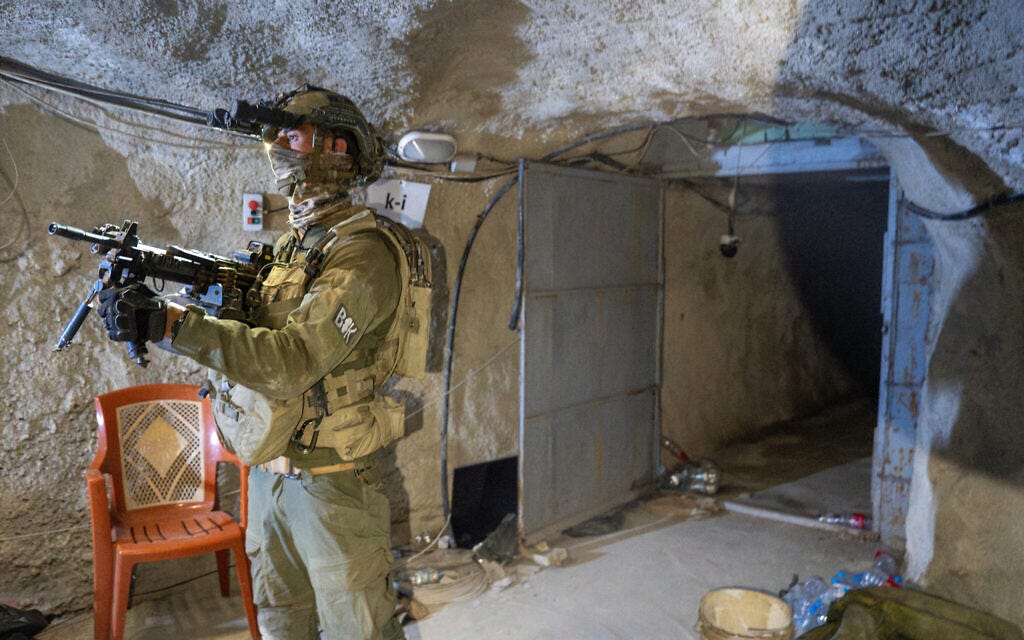
Under a Lebanese Border Village, IDF Finds Huge Hezbollah Base Primed for Invasion—Written by Emanuel Fabian for The Times of Israel—October 26, 2024
Israel Destroys Underground Hezbollah Bunker—Admiral Hagari Youtube video touring the bunker.
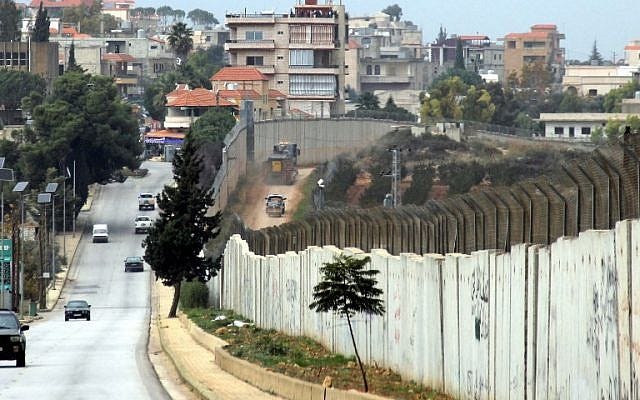
Hezbollah’s Radwan Force Planned to Invade Israel From This Village; Now the IDF Controls It—Written by Diana Bletter for The Times of Israel—October 29, 2024

Biden Advisers Heading to Israel to Discuss Lebanon Deal—Written by Joshua Marks for Jewish News Syndicate—October 30, 2024
'Complete Surprise': IDF Surrounds Remaining Terrorists in North Gaza, 60 Surrender—Written by Avi Ashkenazi for the Jerusalem Post—Octob er 29, 2024

Editor's Notes: The Surge of October 8 Jews and the New Wave of Jewish Reconnection - Comment—Written by Zvika klein for the Jerusalem Post—October 24, 2024
Naim Qassem Vows Hezbollah Will Continue Fighting—Written by David Daoud for The Foundation for Defense of Democracies—October 29, 2024
'I don't Think They Would've Gotten Far,' IDF Brig. Gen. Says of Hezbollah's Planned Invasion—Written by Avi Ahkenazi for the Jerusalem Post—October 30, 2024
Gallant: Hezbollah Rocket Arsenal Down to 20%; Disagreements About How Long to Continue Invasion— Written by Yonah Jeremy Bob for the Jerusalem Post—October 29, 2024
'We're Fashioning Post-War Gaza': The Contractor Set to Facilitate Aid Distribution in Gaza—Written by Itamar Eichner for Ynet News.
Israel Inks $500 Million Defense Deal for Expanded Laser Interception Systems—Written by Yoav Zitun for Ynet News—October 28, 2024
Iron Beam - World's Most Powerful Laser Defense System—Written by Dean Shmuel ELMAS/GLOBES/TNS for the Jerusalem Post—October 30, 2024
Israel’s Struggle with Hezbollah—A War Without End is now available in eBook and hardback format on Amazon and IngramSpark. This compelling narrative explores Hezbollah’s origins and cancerous growth, traces Israel’s response, and reveals Israel’s present readiness to meet Hezbollah’s challenge.
Cliff Sobin
Important Link—Alma Research and Education Center: Understanding the Security Challenges on Israel’s Northern Border






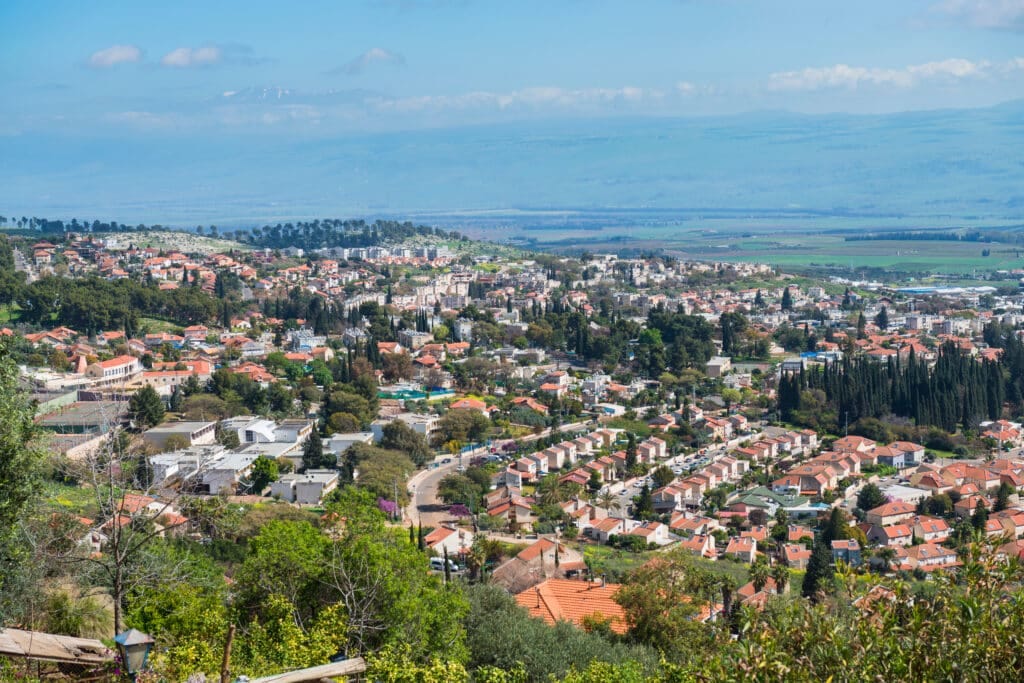

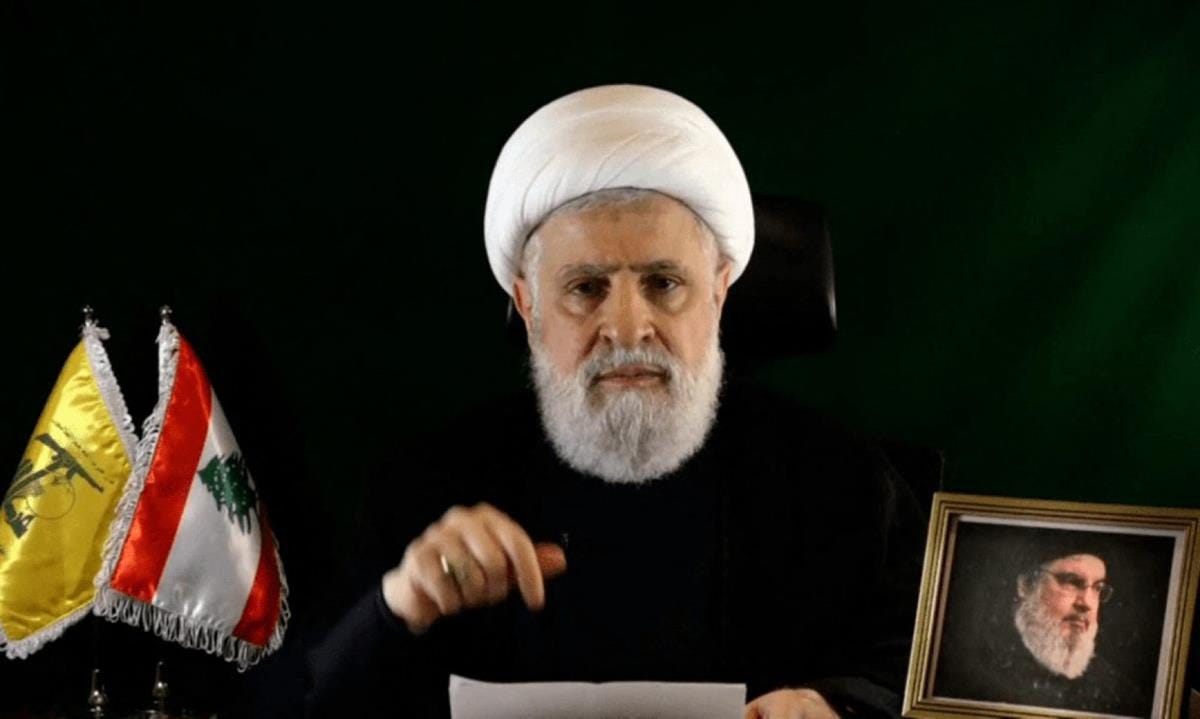


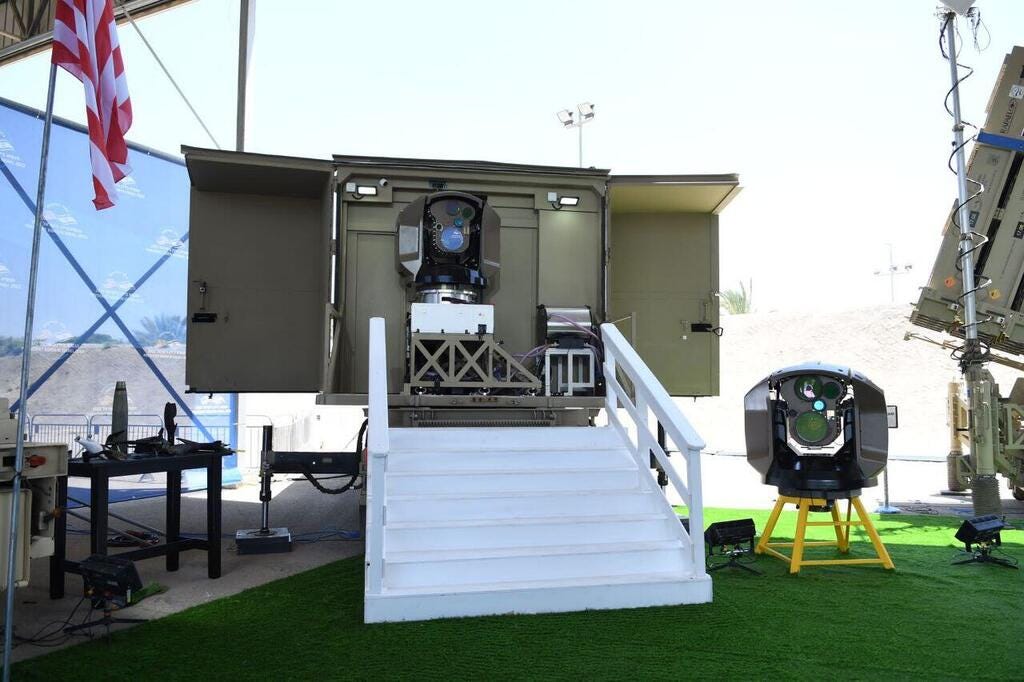

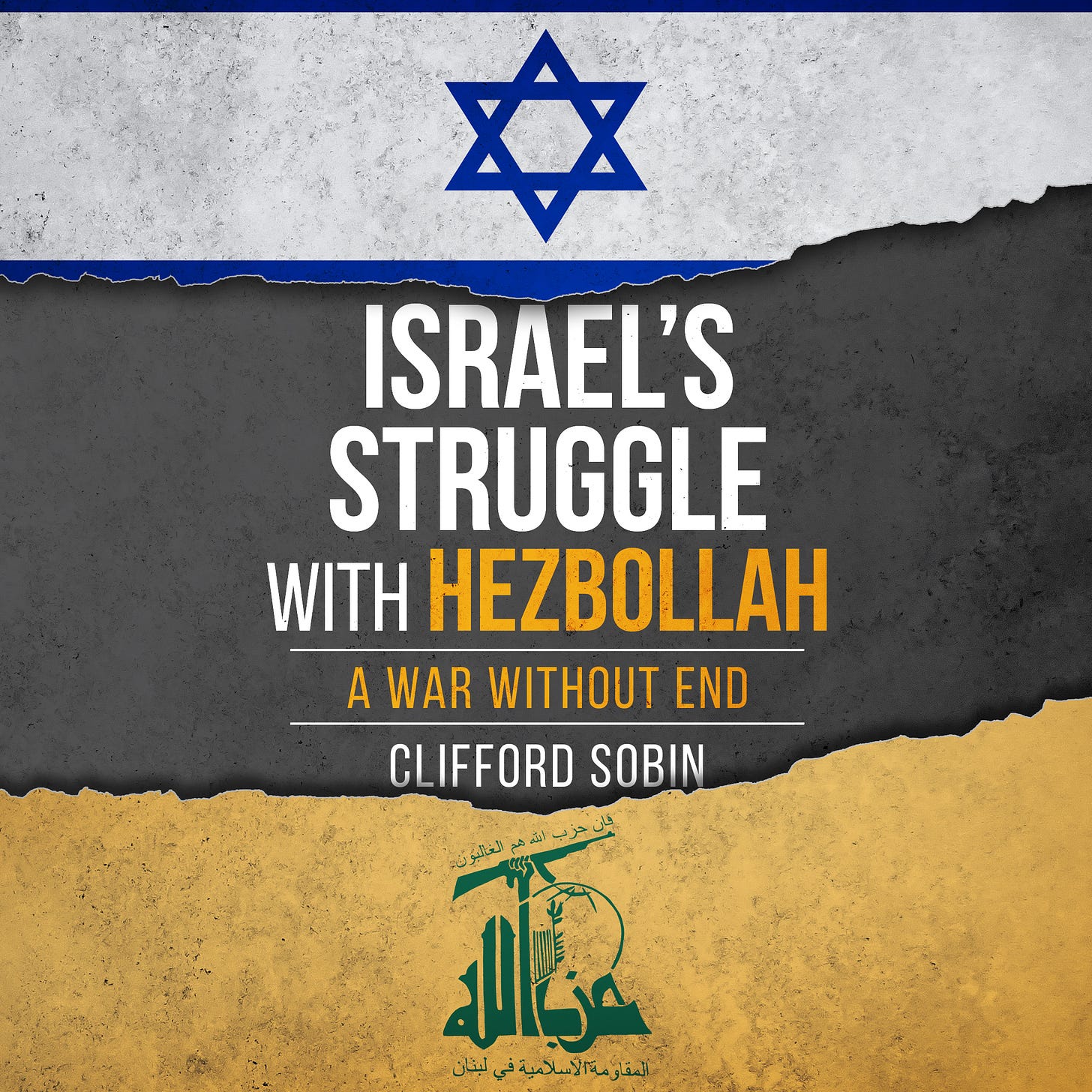
This is another of your very thorough examinations of a particular subject, in this case, Israel versus Iran. You have a way of presenting the background to your analysis that brings clarification to complex issues. I also appreciated your view of what comes next and what Israel needs to accomplish to achieve victory in this war against Iran and her proxies.